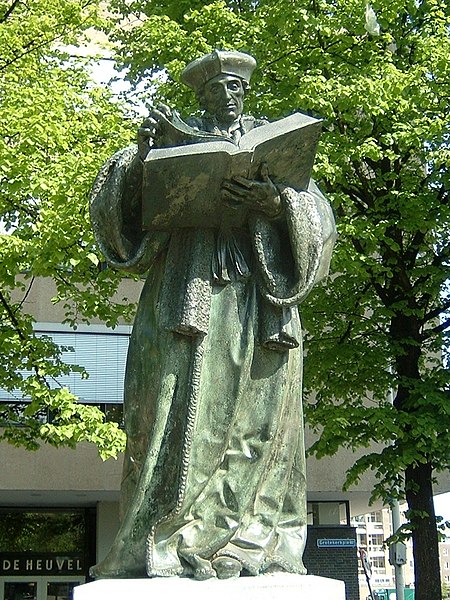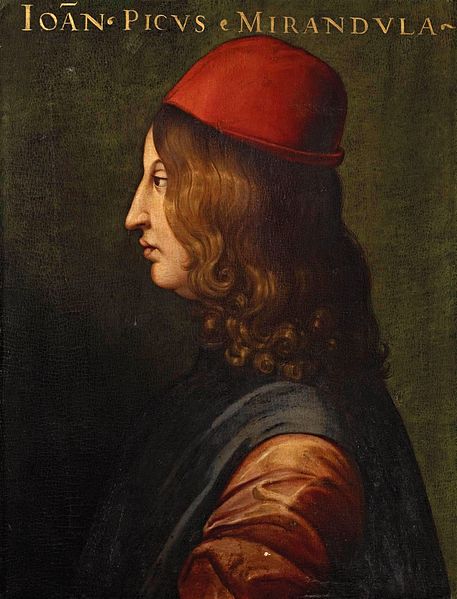Desiderius Erasmus Roterodamus was a Dutch Christian humanist, Catholic theologian, educationalist, satirist, and philosopher. Through his vast number of translations, books, essays, prayers and letters, he is considered one of the most influential thinkers of the Northern Renaissance and one of the major figures of Dutch and Western culture.
Portrait of Erasmus of Rotterdam (1523) by Hans Holbein the Younger resting his hands on a Greek The Labours of Hercules, "arguably…the most important portrait in England"
Statue of Erasmus in Rotterdam. Gilded bronze statue by Hendrick de Keyser (1622), replacing a stone (1557), and a wooden (1549).
Hieronymous Bosch, Temptation of St Anthony, triptych (c. 1501), painted in 's-Hertogenbosch, later owned by friend Damião de Gois
Bust by Hildo Krop (1950) in Gouda, where Erasmus spent his youth
Christian humanism regards humanist principles like universal human dignity, individual freedom, and the importance of happiness as essential and principal or even exclusive components of the teachings of Jesus. Proponents of the term trace the concept to the Renaissance or patristic period, linking their beliefs to the scholarly movement also called 'humanism'.
Giovanni Mirandola
Erasmus
Thomas More
Leonardo da Vinci's Vitruvian Man (c. 1490) shows the correlations of ideal human body proportions with geometry described by the ancient Roman architect Vitruvius in his De Architectura. Vitruvius described the human figure as being like the principal source of proportion among the Classical orders of architecture.[relevant? – discuss]







